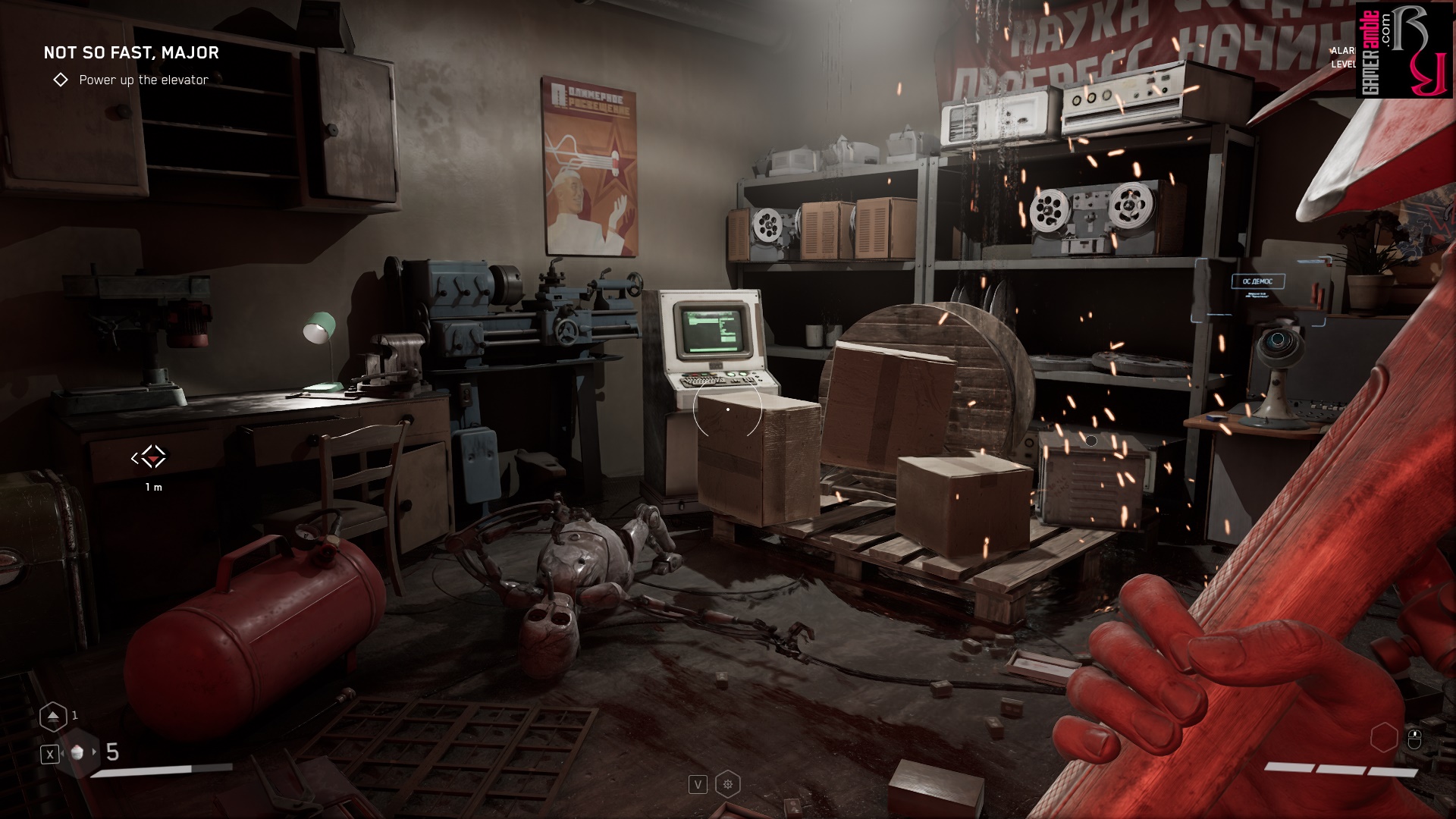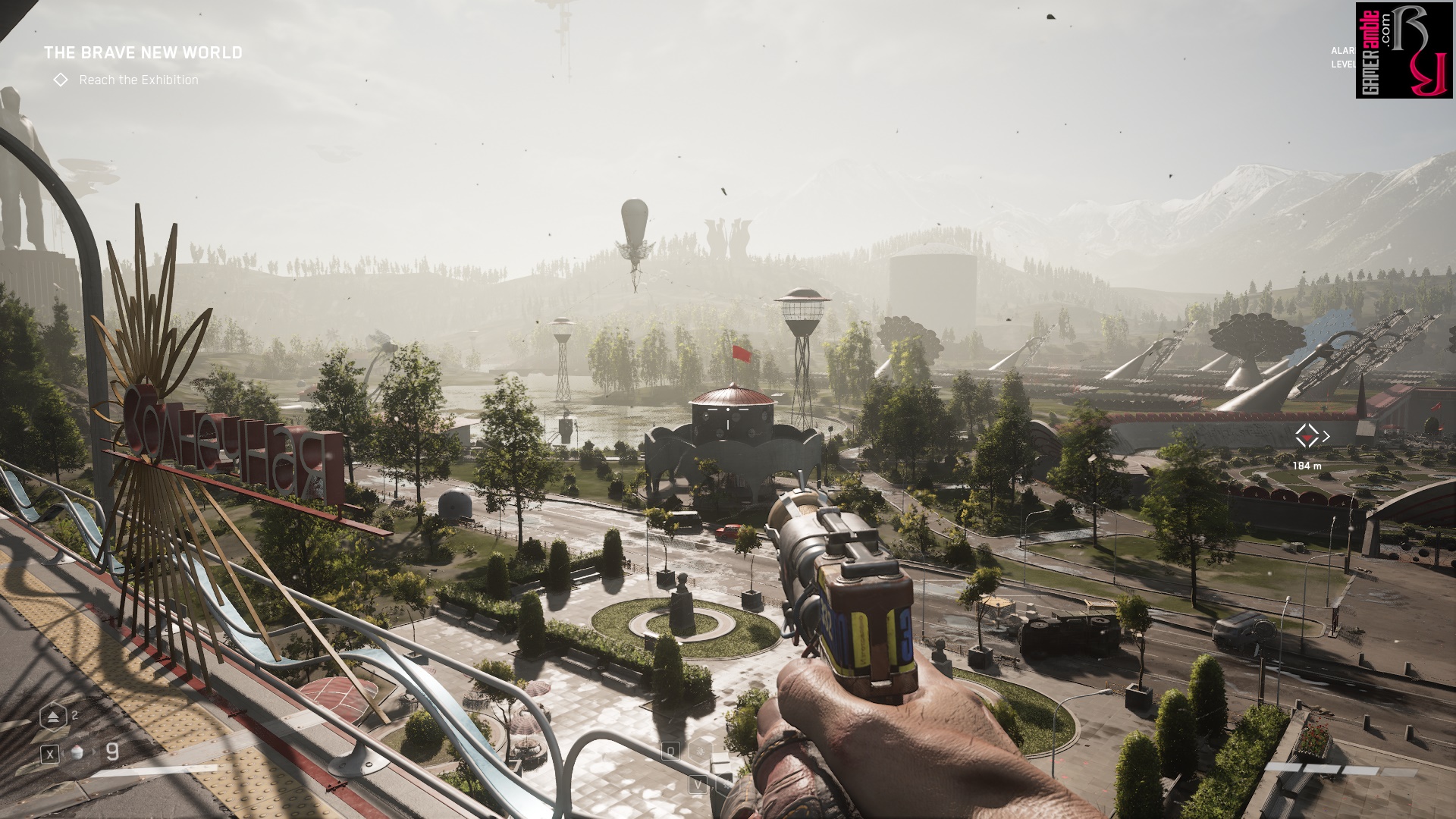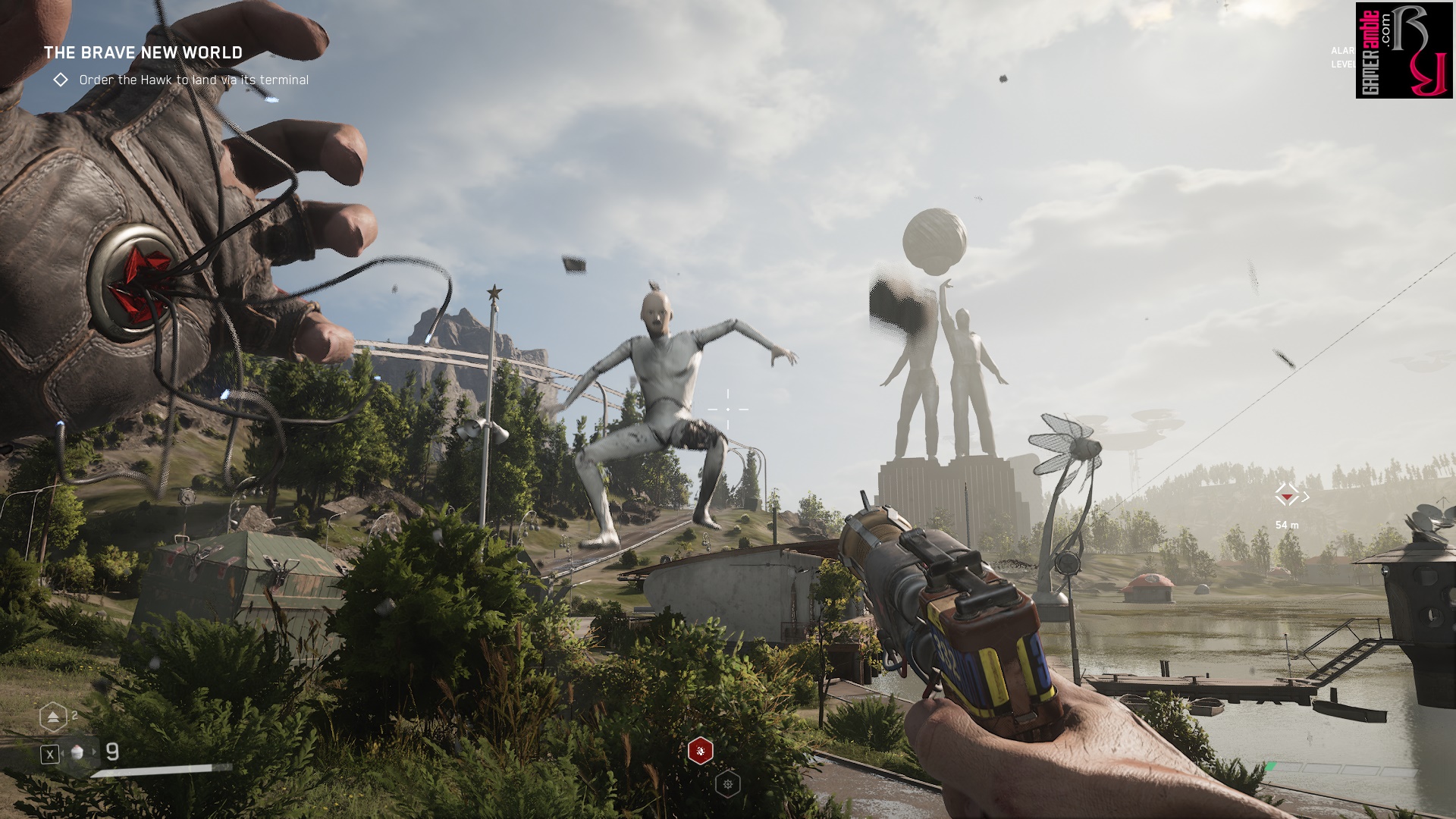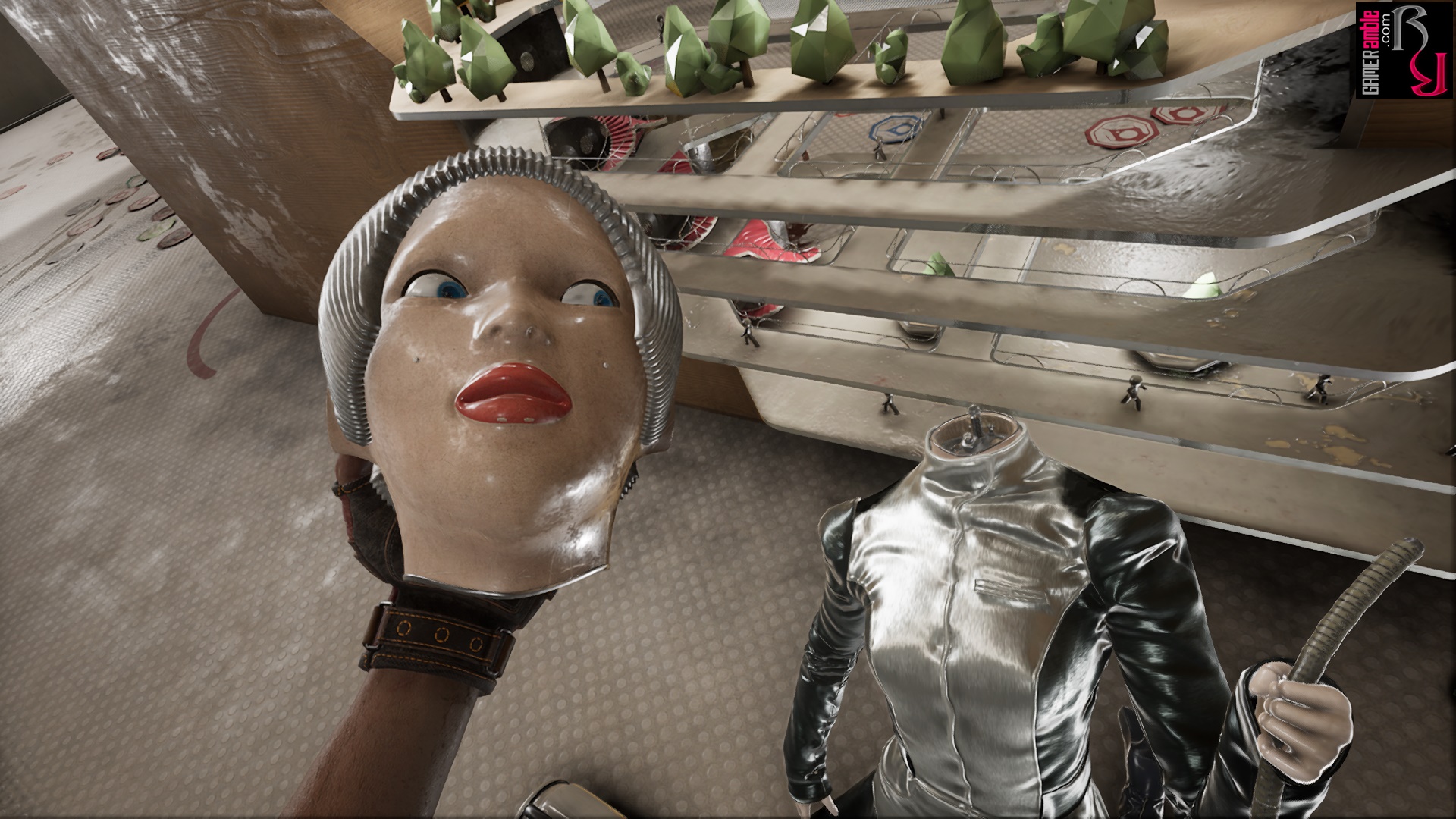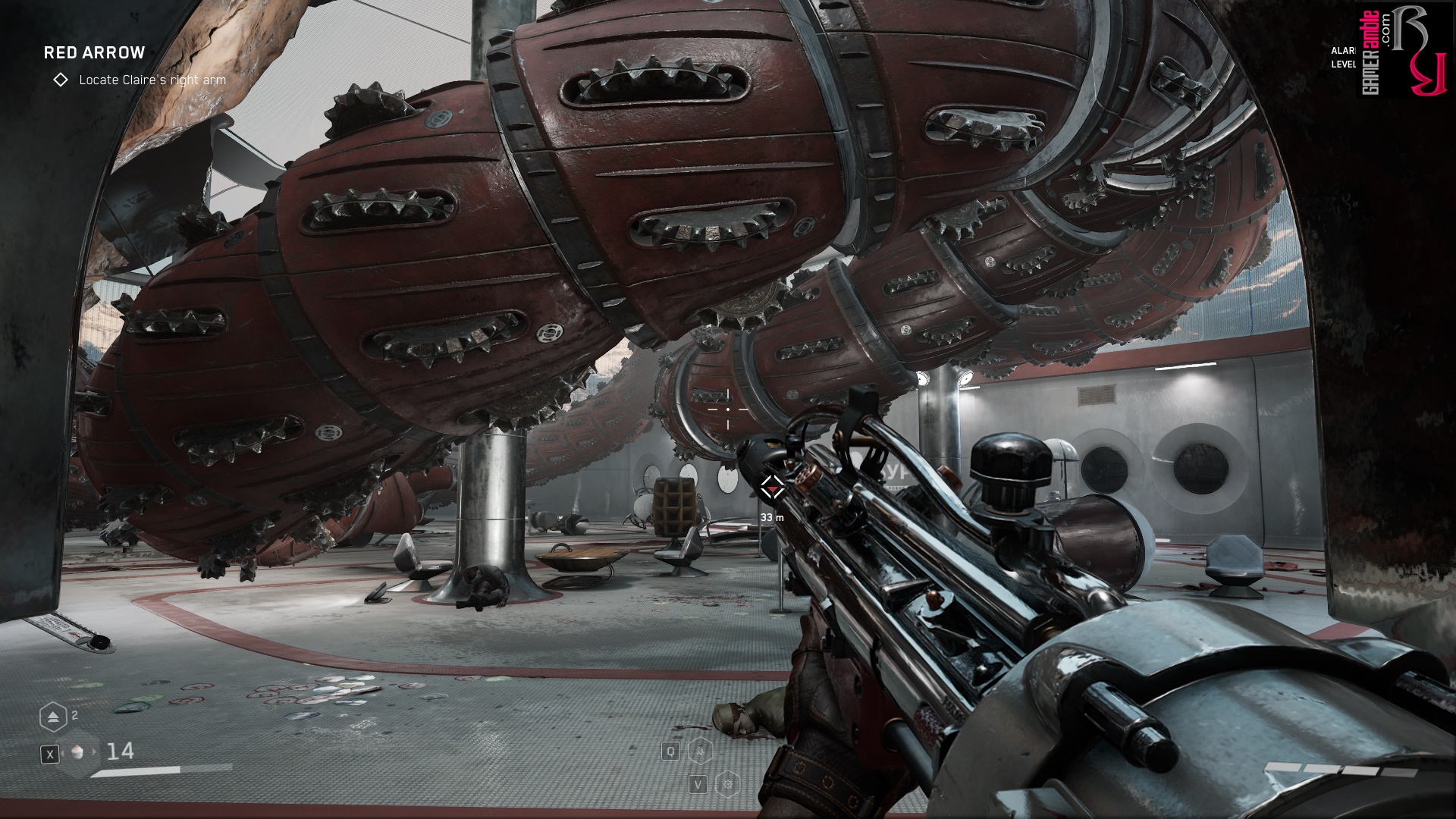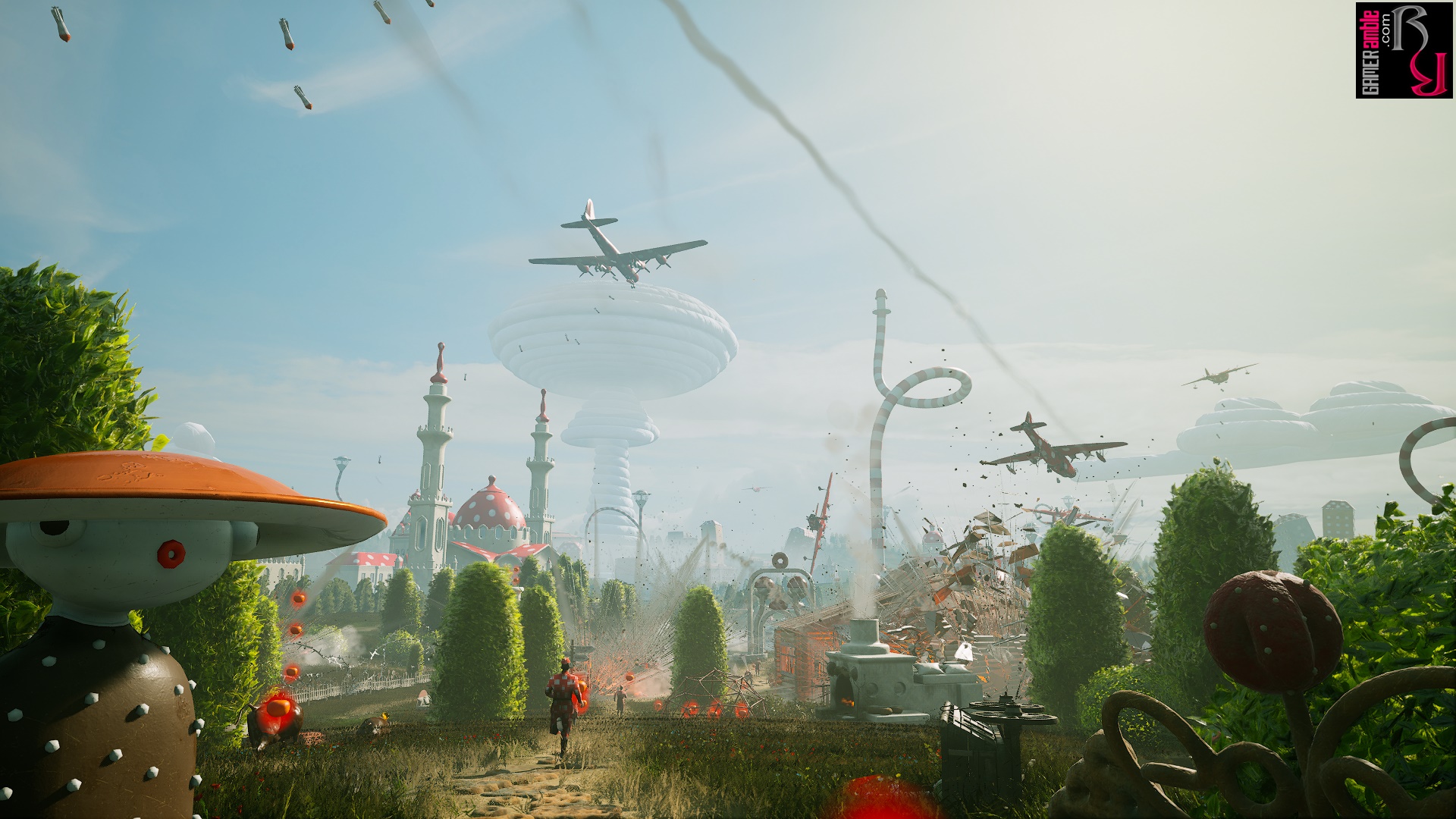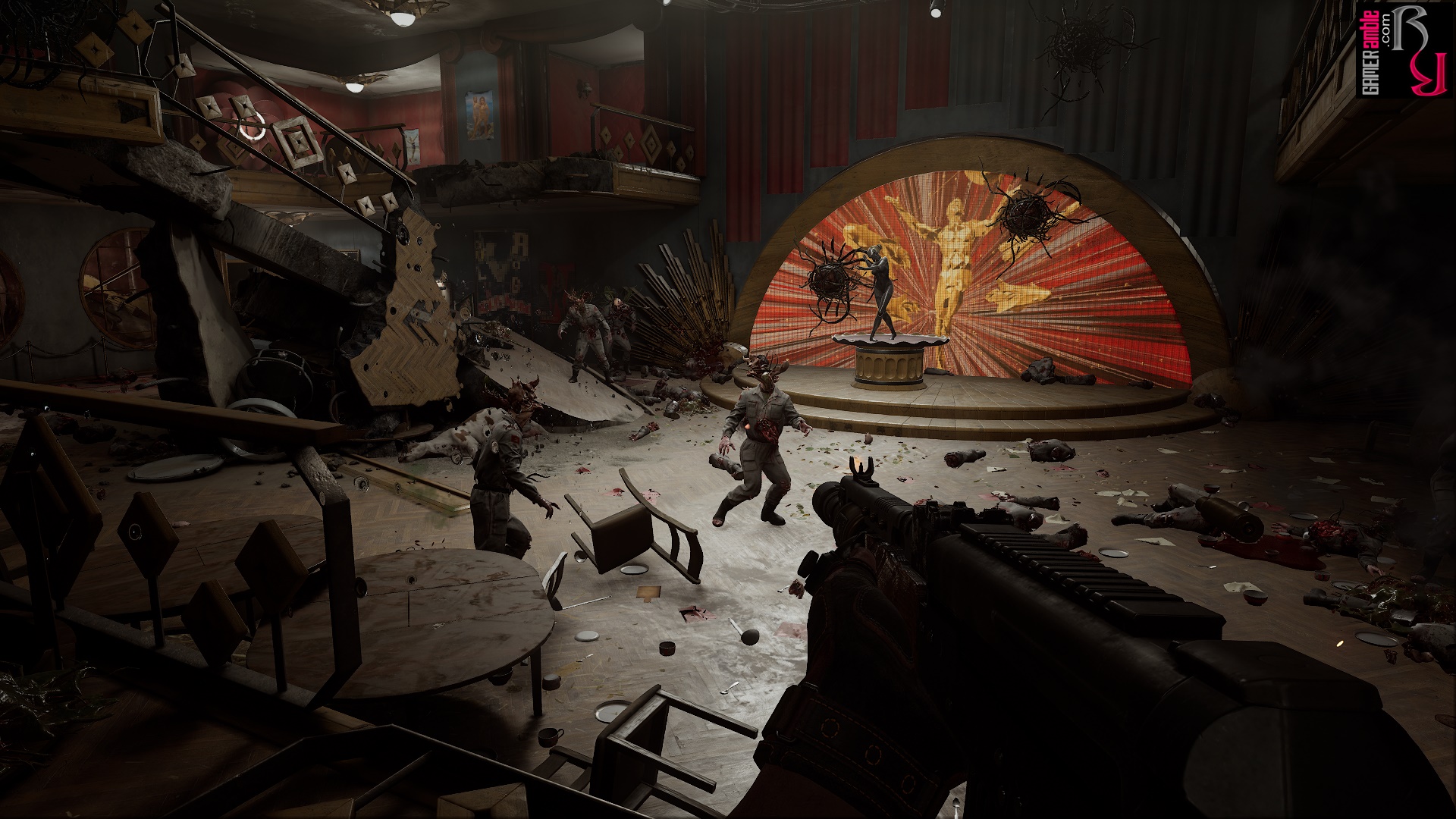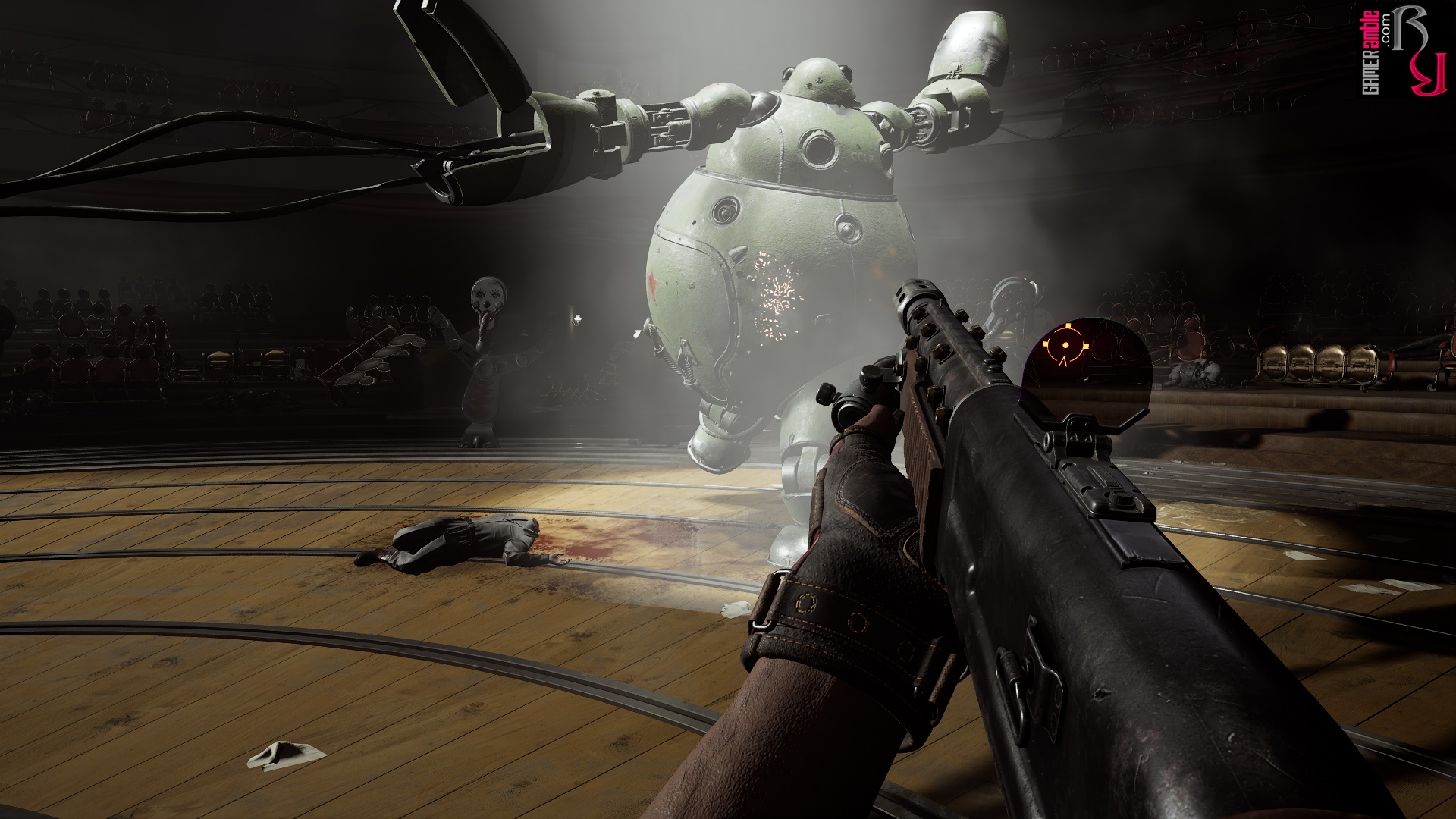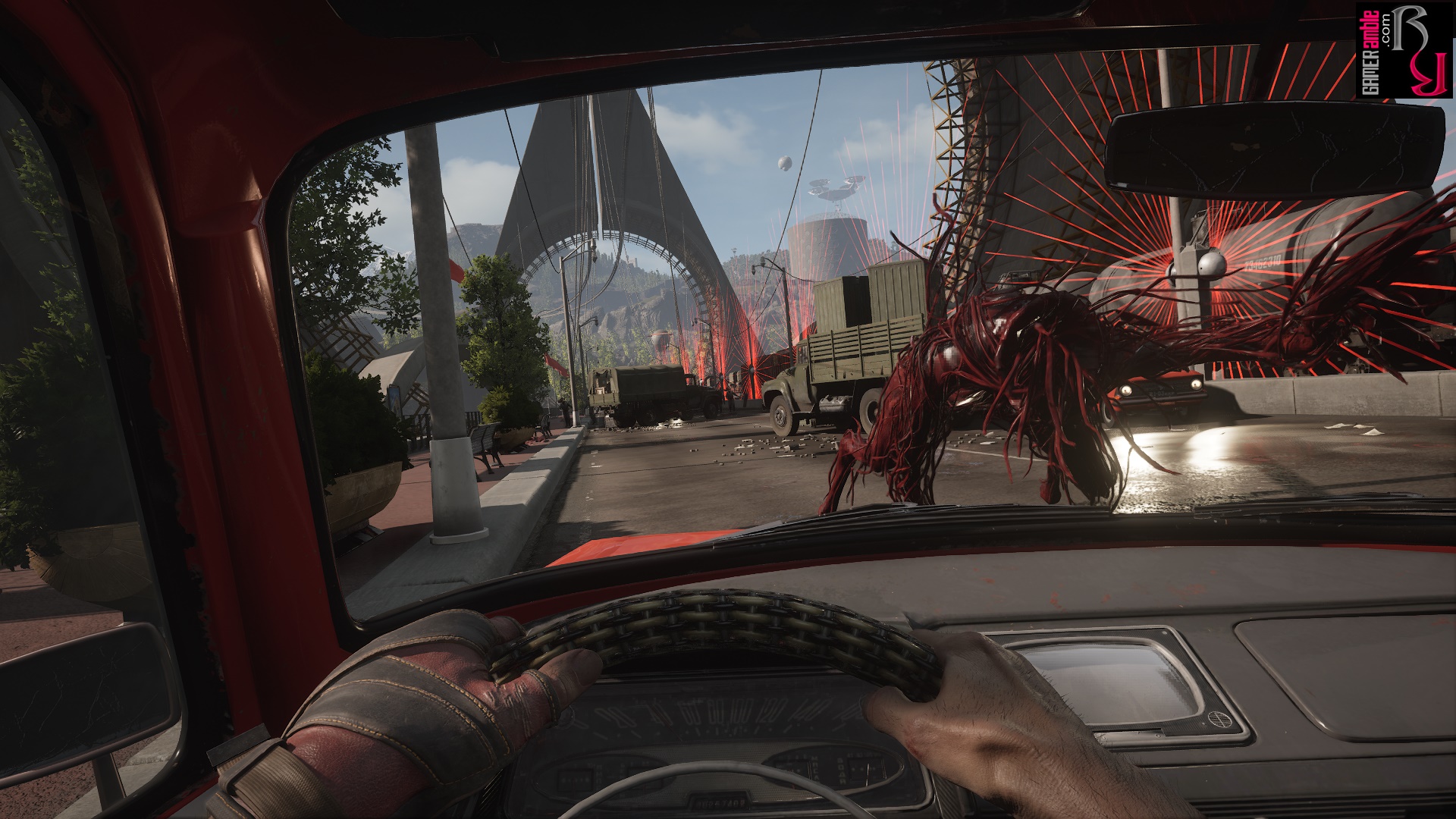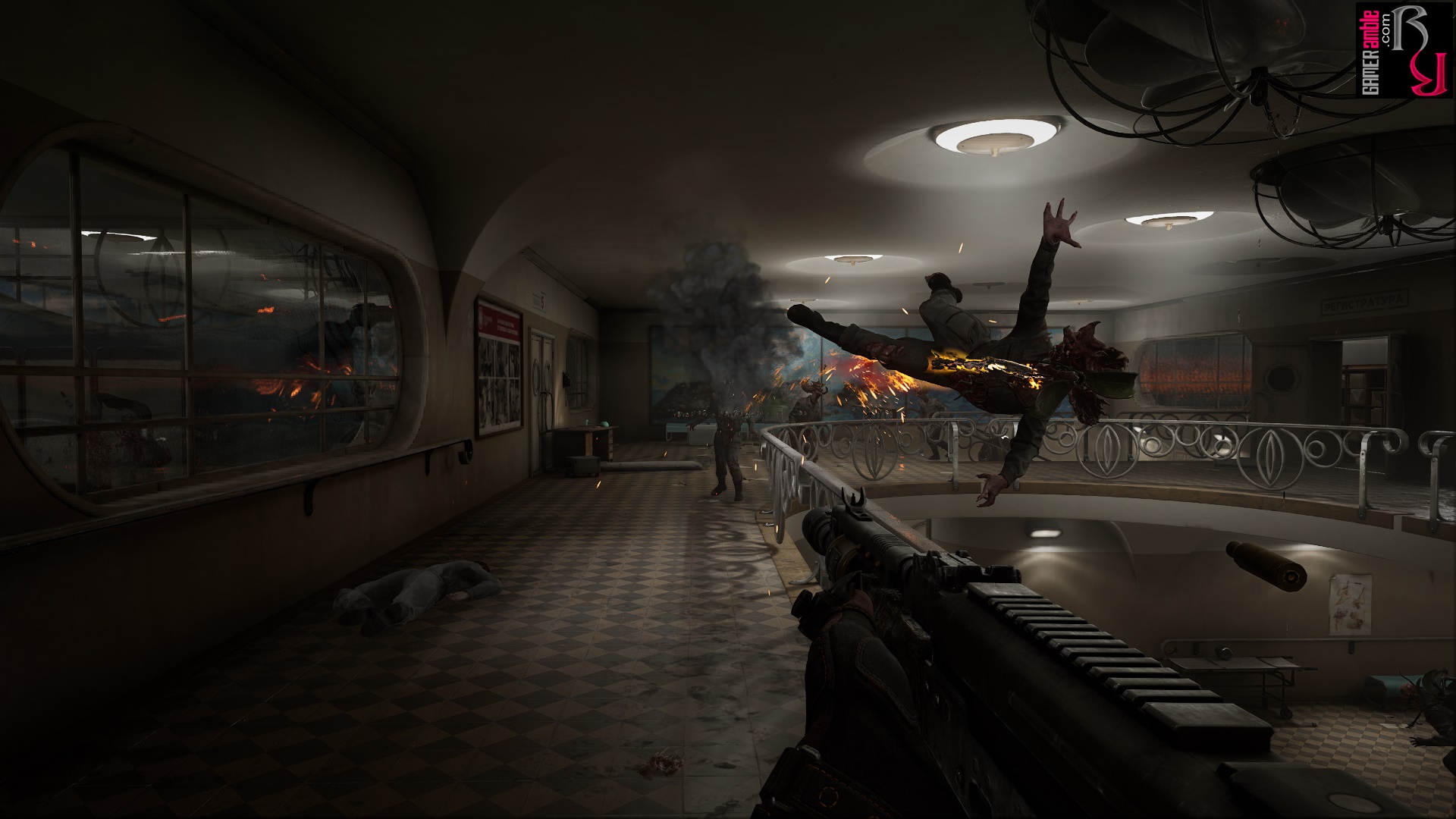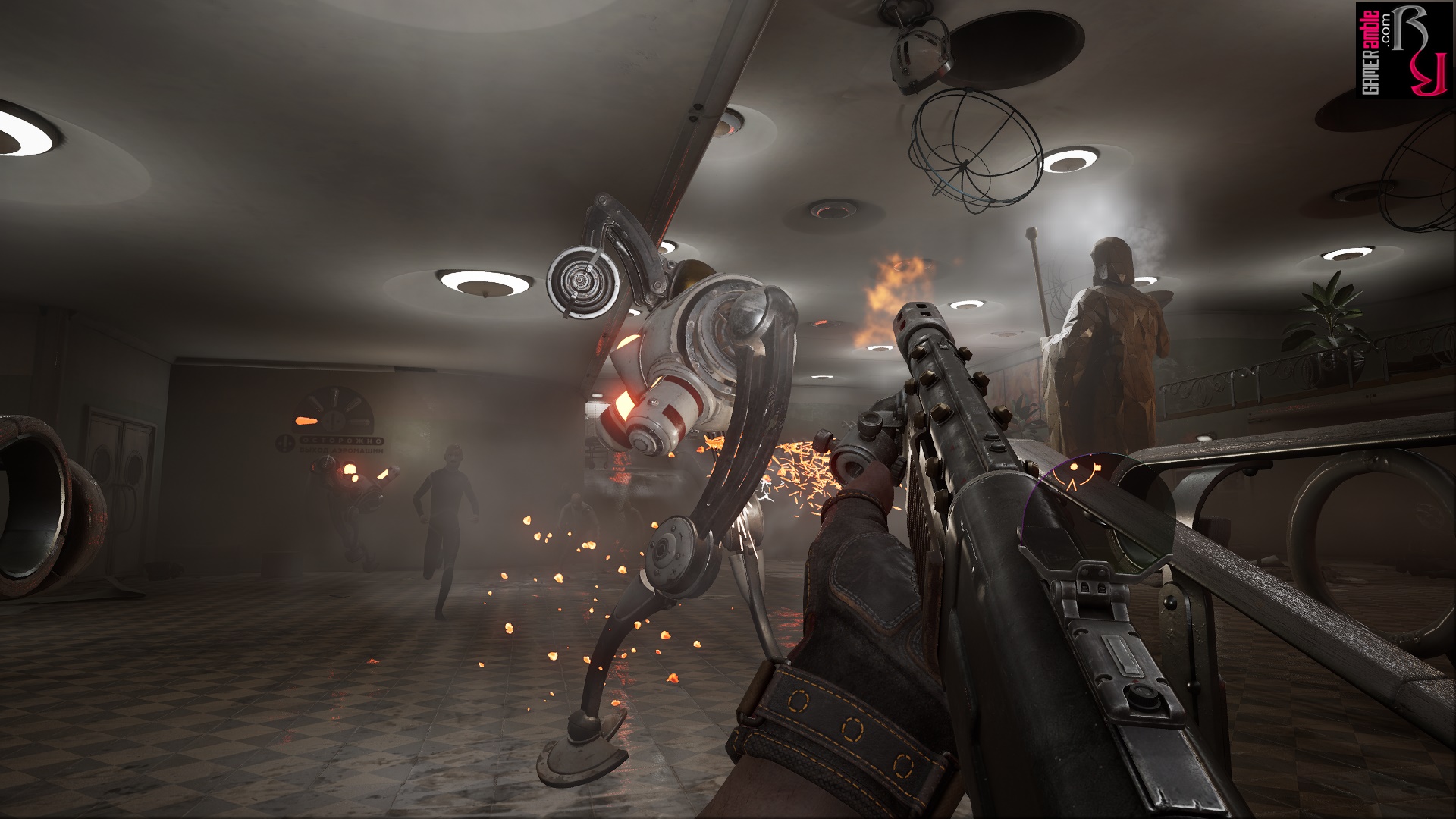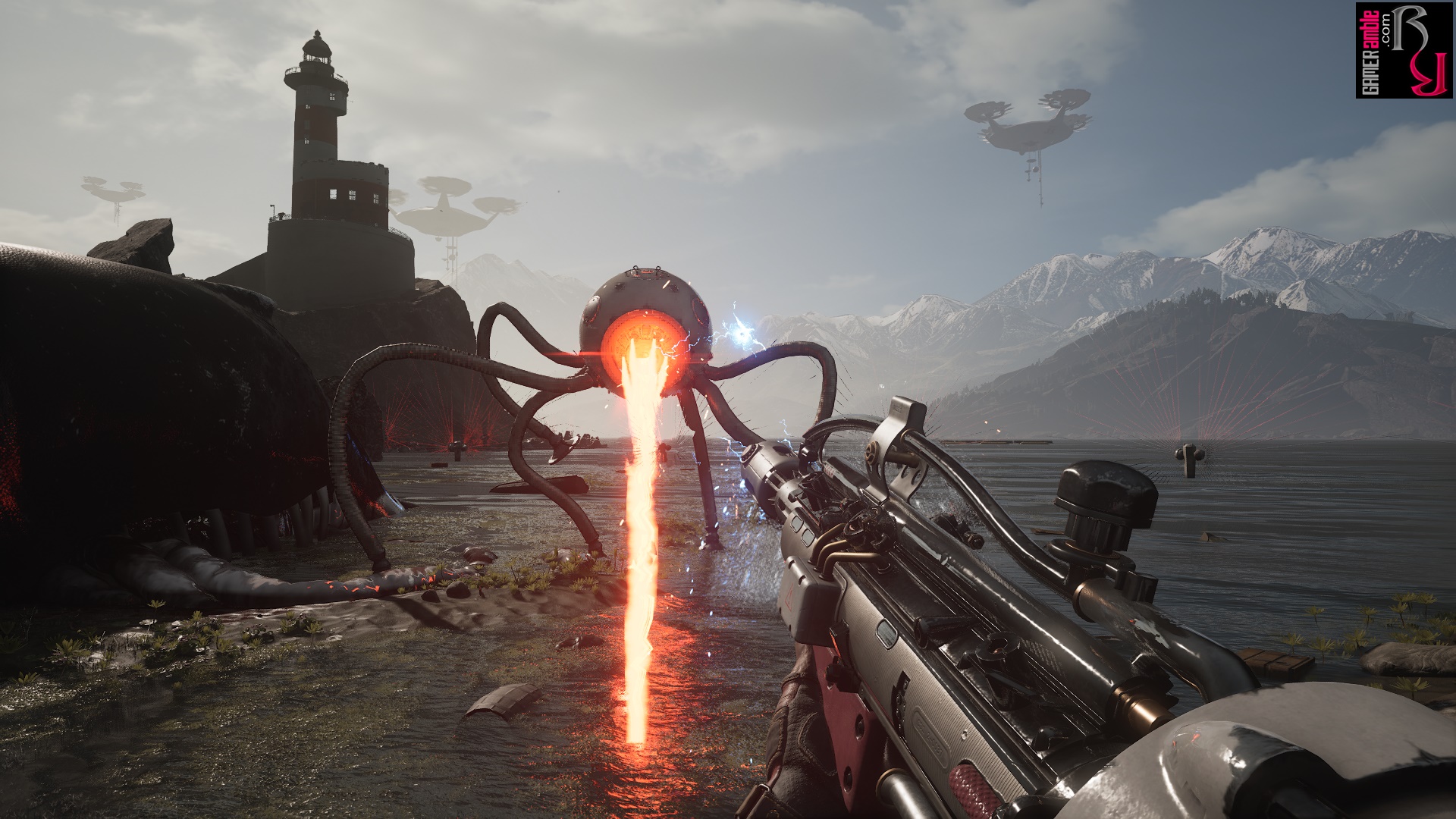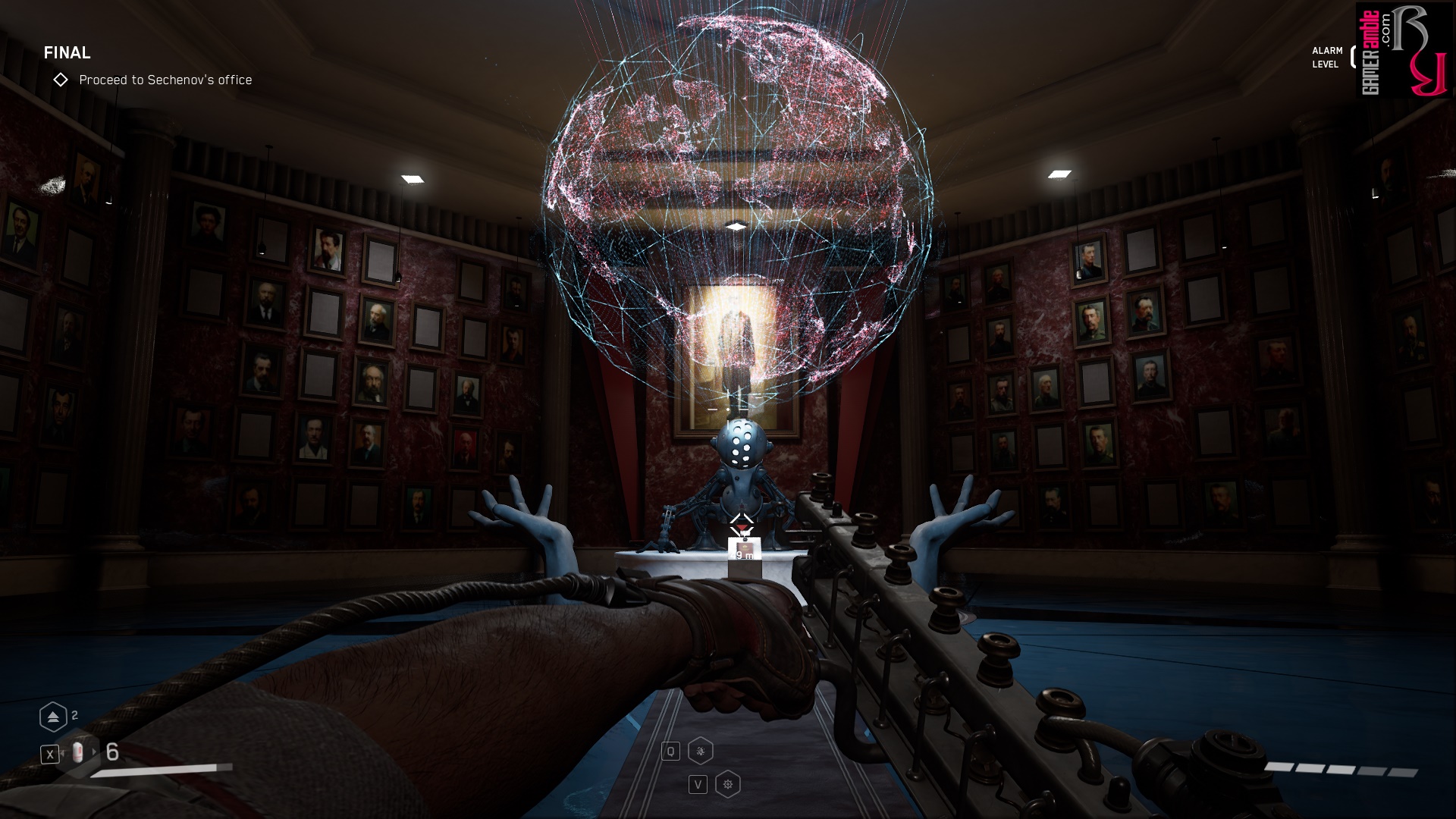Atomic Heart
Developer: Mundfish | Publisher: Focus Entertainment, 4Divinity | Release Date: 2023 | Genre: Action / First Person Shooter / RPG | Website: Official Website | Purchase: Steam
Atomic Heart is set in the 1950s, but in an alternative history version of the Soviet Union where things went very differently after the war. Although defeated, Germany managed to unleash a virus called the Brown Plague that took the lives of millions. In the aftermath, Russia was able to step up with new technology, floating cities, and robots which made them the envy of the world. It is in this retro-futuristic utopia that the protagonist, Major Sergey Nechayve, nicknamed “P3” finds himself. P3 works as a hired muscle for the brilliant Dr. Dmitry Sechnov, who is one of the key players in Russia’s plans for a brighter future. Unfortunately, there is the small issue of a robot uprising that crops up just as the country is preparing for the launch of a project known as Kollective 2.0. Since this project involves giving humans the ability to interface with robots remotely, those in command are understandably eager to get the whole mess cleaned up as quickly and quietly as possible. P3 is handed a snazzy artificial intelligence glove named CHAR-les and sent off on a mission to stop the rogue robots that have massacred everyone at the research facility. However, his efforts to track down the robotics designer responsible for the mess will take P3 on a disturbing journey into the dark underbelly of the Soviet Dream.
From its opening moments seeing P3 enjoy a leisurely canal cruise on the floating city of Chlomey, there’s no denying that Atomic Heart takes its influences from titles such as Bioshock: Infinite and even the original Half-Life. The game immediately sets out to impress players with its detailed Unreal Engine 4 powered visuals and vibrant gameworld that is packed with detail. After a lengthy sightseeing trip through the city and a scenic ride down to the surface where the research hub is located, the game finally allows players to do more than gawk at their surroundings.
The game takes the form of a single-player first-person shooter but also features the now obligatory role-playing elements to spice things up. As a former soldier, P3 is proficient in both ranged and melee combat, but Charles also provides him with access to special powers. These polymer abilities include highlights such as being able to freeze enemies, shock them, burn them, or even hold them with telekinesis. Players can only use a combination of two abilities at a time, but they can all be upgraded with polymer to enhance their effectiveness. Some enemies are resistant to certain powers or weapons, which provides an incentive for players to not only stick to their favorites. Speaking of enemies, P3 not only has to deal with the various robots that have suddenly developed a taste for slaughter but also biological foes. The latter is the result of experiments performed at the research hub and bears more than a passing resemblance to the Clickers from The Last of Us.
When not cracking skulls or dismantling robots, P3 spends his time bickering with his glove while exploring the various facilities found in the research hub. While the path through the storyline is fairly linear, the game does allow players to engage in some open-world exploration while traveling between the points of interest. Most of these are optional areas where players can find blueprints and components to upgrade weapons or craft new ones. While not strictly necessary for completing the game, these optional areas are typically interesting to explore and feature puzzles as well as platforming challenges.
Unfortunately, the game does not feature a fast-travel option, but players can use a car to drive around the open-world map. This is fun at first, especially when driving past some of the scenic outlooks, but dealing with the hordes of respawning enemies soon becomes tedious. Robots respawn at such an alarming rate that avoiding them is often preferable to having to deal with them. The game does offer stealth as an option, but once again destroyed security cameras are rebuilt by drones within seconds, and sneaking up on an enemy rarely works as expected.
There’s no denying that Atomic Heart is a very ambitious game and along with the stunning visuals, there’s also plenty of adrenaline-fueled boss battles with giant machines. Less welcome is the frequent quick time events, which can result in an abrupt game over screen, complete with a funny Fallout style 2D animation if failed. Thankfully, enemies tend to display a red flash before they perform a critical attack, giving players an opportunity to dodge. Failure to do so often results in getting knocked down or thrown into a quick-time event, but as the game progresses and P3 becomes more powerful this becomes less of an issue.
The main reason for destroying all the robots and ransacking their corpses is to find the components needed to upgrade weapons and craft consumables. The developers have taken a rather interesting approach to this feature, though, with the inclusion of NORA, which can only be described as a sadistic and sexually deviant vending machine. Her conversations with P3 are disturbing, to say the least, and wearing headphones is recommended when dealing with her unless you want to bewilder any innocent bystanders within earshot. Some players will find the NORA encounters to be juvenile while others will find them hilarious, but one thing is for sure it’s not something you encounter often in games these days. Players can craft weapons such as rifles, shotguns, railguns, and bazookas using NORA and also upgrade elements like barrels, modules, magazines, and aiming devices of each. These upgrades have multiple levels, but harder-to-find components are needed for each level. NORA can also be used to upgrade Charles to make the polymer abilities more effective and all upgrades can be refunded without penalty, which is great for trying them out to see what works best. Finally, NORA serves as a storage device where players can swap out weapons and consumables from their limited inventory.
The combat in Atomic Heart can be quite versatile and there are enough unique enemies to make for exciting encounters. These enemies come in all shapes and sizes, including humanoid ones that can shoot lasers from their faces and smaller ones armed with sawblades. The designs are interesting as most of the robots were designed for labor purposes and not combat, but that doesn’t mean they are very efficient at killing. Apart from all the combat Atomic Heart also features plenty of puzzles, which range from door-picking mini-games to lining up lasers and guiding energy balls through tubes using telekinesis. Some of these are repeated a little too often for our liking and the game is also overly fond of fetch quests. In addition, the pacing can feel a little weird as the game is fond of unleashing massive info dumps at times to further the storyline.
The visuals of Atomic Heart will draw the most attention, but the audio is quite impressive too. The highlight is the soundtrack, which features the work of Mick Gordon who is famous for the music in some of the Doom games. Atomic Heart also uses a “radio from the future” gimmick to explain the modern-sounding tunes that crop up in parts of the game. The voice acting is more of a mixed bag as P3 and Charles spend a lot of time talking to each other. P3 lacks charm and can be very obnoxious, but does show some character development over the course of the game. However, he does have some baffling catchphrases that can be cringe-worthy, even when explained later in the game. Along with the usual computers filled with e-mails and audio devices, which take the form of pocket watches in this game, Atomic Heart also allows players to “speak” to the dead. Thanks to their implants, many of the corpses that litter the research facility can still converse with P3, which is both morbid and unique.
There are a lot of things that we like about Atomic Heart, such as the ability to hold down a button and loot every drawer, cupboard, and chest in sight with telekinesis. Unfortunately, for every good idea, there are also a few that could have been better. The stealth aspects felt completely useless and the novelty of the open-world area quickly wore off. There’s also no denying that the writers for the game had very lofty ambitions, but the pacing could have been better. The game does have some interesting twists, but many players will find their attention drifting during some of the technobabble-filled conversations. Finally, while there are two different endings, neither is especially fulfilling and the outcome players get depends on a single choice late in the game.
Overall, Atomic Heart is not the most original game, but it does an admirable job of imitating some of the best titles in the genre. It also features enough originality and good ideas of its own that it doesn’t feel like playing a cheap Bioshock knock-off. Unfortunately, it can be frustrating at times and some parts of the game are downright annoying. Nevertheless, the developers have created a fascinating world filled with interesting adversaries and inventions that we wouldn’t mind returning to in a more polished sequel.
System Requirements
- Requires a 64-bit processor and operating system
- OS: Windows 10 (20H1 version or newer, 64-bit versions)
- Processor: AMD Ryzen 3 1200 or Intel Core i5-2500
- Memory: 8 GB RAM
- Graphics: 4 GB VRAM, AMD Radeon R9 380 or NVIDIA GeForce GTX 960 DirectX: Version 12
- DirectX: Version 12
- Storage: 90 GB available space
- Additional Notes: 30 FPS, 1920×1080 in low
- Requires a 64-bit processor and operating system
- OS: Windows 10 (20H1 version or newer, 64-bit versions)
- Processor: AMD Ryzen 5 2600X or Intel Core i7-7700K
- Memory: 16 GB RAM
- Graphics: 8 GB VRAM, AMD RX 6700 XT or NVIDIA GeForce RTX 2070
- DirectX: Version 12
- Storage: 90 GB available space
- Additional Notes: SSD recommended, 60 FPS, 1920×1080 in ultra


